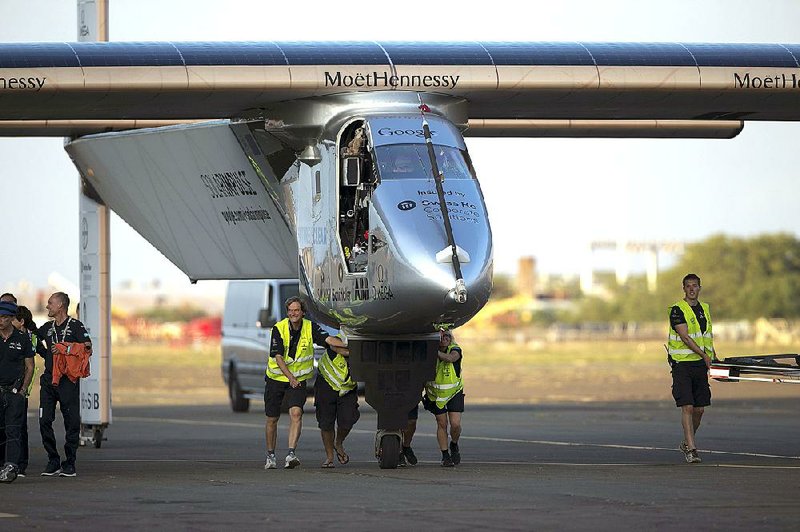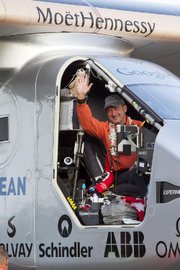KAPOLEI, Hawaii -- A plane powered by the sun's rays landed in Hawaii on Friday after a record-breaking, five-day journey across the Pacific Ocean from Japan.
Pilot Andre Borschberg and his single-seat aircraft landed at Kalaeloa, a small airport outside Honolulu. His nearly 118-hour voyage from Nagoya broke the record for the world's longest nonstop solo flight, his team said. The late U.S. adventurer Steve Fossett set the previous record of 76 hours when he flew a specially-designed jet around the globe in 2006.
But Borschberg flew the Solar Impulse 2 without fuel. Instead, its wings were equipped with 17,000 solar cells that powered propellers and charged batteries. The plane ran on stored energy at night.
The trans-Pacific flight was the riskiest leg of the plane's global travels, because there was nowhere for it to land in an emergency.
The engineless aircraft landed in silence Friday, the only sound the hum of a nearby helicopter. About 200 people witnessed the touch-down shortly before 6 a.m.
Later in the morning, Borschberg called the flight an extraordinary experience, saying it marked historical firsts for aviation and for renewable energy.
"Nobody now can say that renewable energies cannot do the impossible," he said.
The most challenging part of the journey was when he and fellow Swiss co-pilot Bertrand Piccard had to decide when exactly to leave Japan.
"You don't know if it's feasible. You don't know if it's possible. You don't know if you are going to lose the airplane," he said.
Borschberg, who did yoga up to 45 minutes daily to counter the effects of immobility and to stay fit, remained in the plane for about an hour after landing before finally emerging. Before exiting, he was approached by customs personnel who asked to see his passport.
Some in the waiting crowd waved Swiss flags, and dignitaries shook his hand. A troupe of young hula performers sang a welcoming song in Hawaiian.
The plane's ideal flight speed is about 28 mph, though that can double during the day when sun's rays are strongest. The carbon-fiber aircraft weighs more than 5,000 pounds, or about as much as a minivan or midsize truck.
Borschberg and Piccard have been taking turns flying the plane on an around-the-world trip since taking off from Abu Dhabi in March. After Hawaii, the plane will head to Phoenix and then New York. Piccard will make the flight to Phoenix, organizers said in a press release.
The project, which began in 2002 and is estimated to cost more than $100 million, is meant to highlight the importance of renewable energy and the spirit of innovation. Solar-powered air travel is not yet commercially practical, however, given the slow travel time, weather and weight constraints of the aircraft.
The plane is visiting Hawaii just as the state has embarked on its own ambitious clean energy project. Gov. David Ige last month signed legislation directing Hawaii's utilities to generate 100 percent of their electricity from renewable energy resources by 2045. The utilities currently get 21 percent of their power from renewable sources.
Information for this article was contributed by Marco Garcia of The Associated Press.
A Section on 07/04/2015

